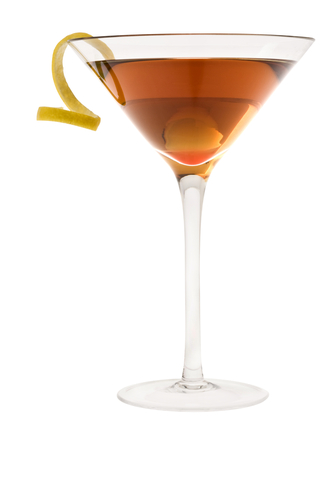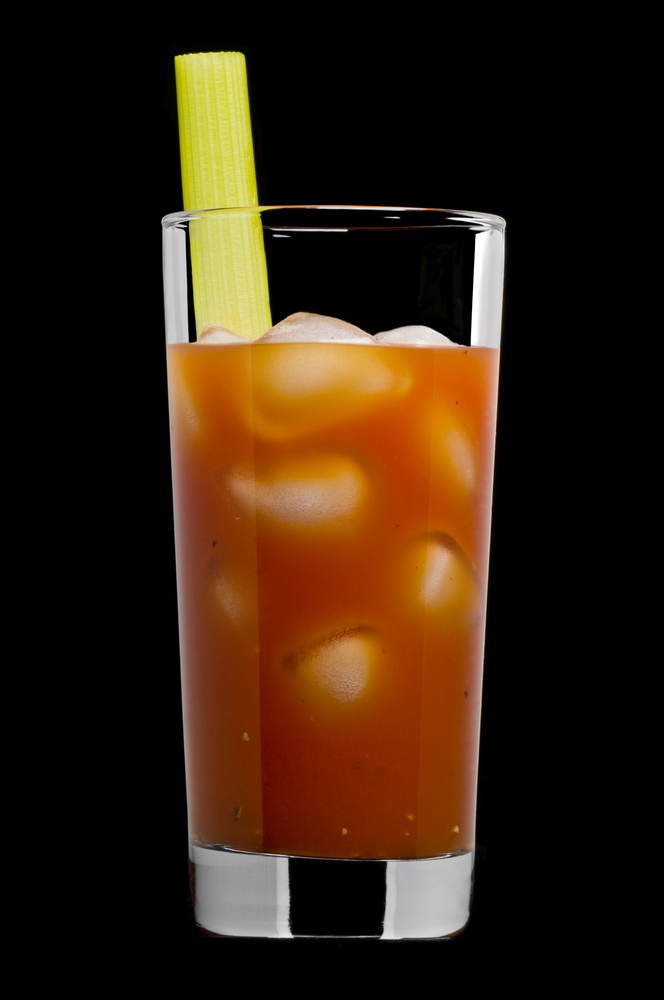Drink of the Week: Tom Johnstone
 For whatever reason, today’s DOTW is not known as “the Tom Johnstone” but is simply “Tom Johnstone.” I could wonder why, but that’s like asking why Chrissie Hynde’s band is “Pretenders” and not “the Pretenders.”
For whatever reason, today’s DOTW is not known as “the Tom Johnstone” but is simply “Tom Johnstone.” I could wonder why, but that’s like asking why Chrissie Hynde’s band is “Pretenders” and not “the Pretenders.”
David Wondrich theorizes that the drink is named for a man “who used to write shows for the Marx Brothers.” Since I’m a pretty big Marxian myself and had never heard of Johnstone, I was forced to do a little research and found that, like certain members of the legendary comedy team, Johnstone — apparently a fairly successful songwriter, cartoonist, and adman — was himself somewhat overshadowed by a better known older brother, Will B. Johnstone. If this drink really is his creation, at least Tom Johnstone gets the distinction of having created a somewhat rarish thing: a hard to foul-up Scotch-based cocktail which allows bartenders a few options, depending on taste and what they’ve got on hand.
Tom Johnstone
1 1/2 ounces Scotch
1/2 ounce fresh lime or lemon juice
1/2 ounce Cointreau or triple sec
1/2 ounce sweet vermouth
This one’s easy. Combine all the ingredients in a cocktail shaker with ice. Shake or, if you must, stir with cracked or crushed ice, and strain into a martini glass.
****
I think what I like most about the Tom Johnstone is that nothing seems to ruin it. My recipe offers substantially more freedom than the canonical Wondrich take. That’s because I found myself liking other versions I found online a bit more, though none of them are even remotely bad.
For starters, even though I often OD on tartness from lemon juice, here I actually prefer it to lime. Also, unlike some other drinks I’ve worked with, this one also works almost equally well with no-name triple sec as it does with Cointreau, the more tart top of the line orange liqueur. I also used some very good Scotch and some pretty cheap Scotch. Both worked dandy.
Tom Johnstone, be you the little known co-writer of “I’ll Say She Is” or some completely unknown bartender, hanger-on, wastrel, or dipsomaniac, I salute you for a very nice mixed beverage. And now, Chico Marx, he who is forever unfairly overshadowed by Groucho and Harpo but not Zeppo, performs a medley that includes the very bouncy “Moonlight Cocktail” starting at 1:50.
You can follow us on Twitter and Facebook for content updates. Also, sign up for our email list for weekly updates and check us out on Google+ as well.

 It is time to correct an old oversight this Friday the 13th. It seems that way back on the second DOTW, in which I dealt with that sturdiest of
It is time to correct an old oversight this Friday the 13th. It seems that way back on the second DOTW, in which I dealt with that sturdiest of  Have you ever found yourself wondering exactly what a hot toddy is? I know I have. I’ve had them in bars maybe once or twice at most and occasionally messed around with heating up some whiskey and water with a little sugar or something else, but I’ve never quite had a handle on what makes a toddy a toddy. The funny part is that after working with them a bit more earnestly the last week or so, I’m still wondering what a hot toddy is.
Have you ever found yourself wondering exactly what a hot toddy is? I know I have. I’ve had them in bars maybe once or twice at most and occasionally messed around with heating up some whiskey and water with a little sugar or something else, but I’ve never quite had a handle on what makes a toddy a toddy. The funny part is that after working with them a bit more earnestly the last week or so, I’m still wondering what a hot toddy is.










